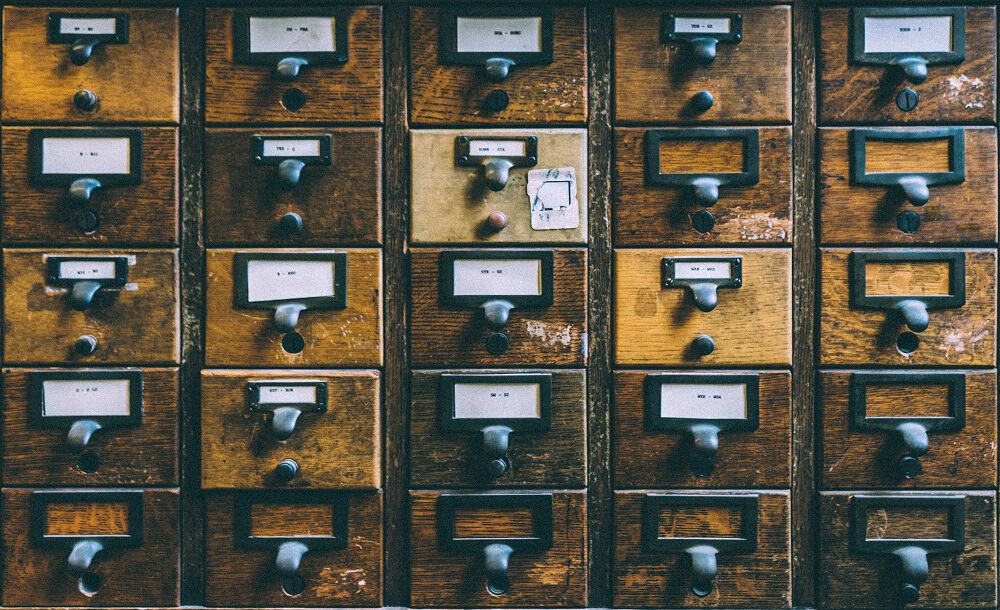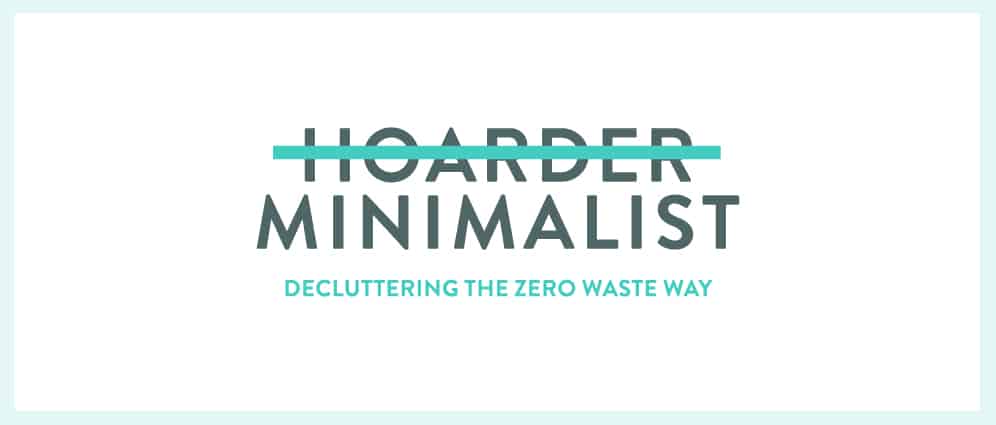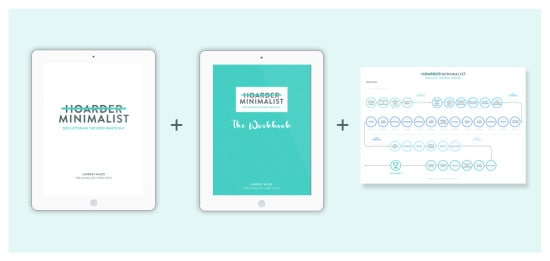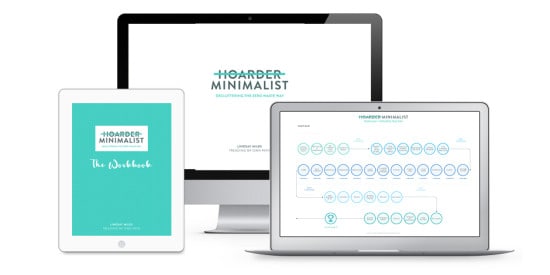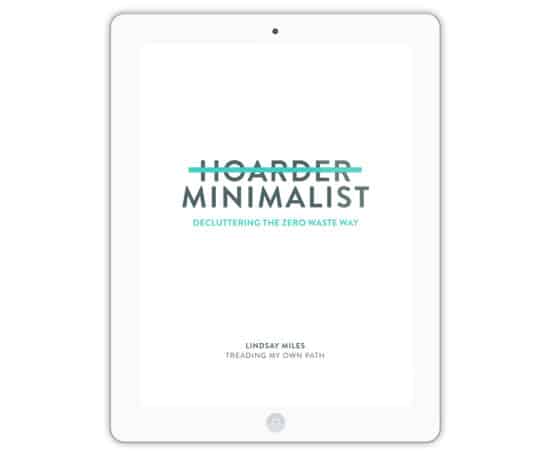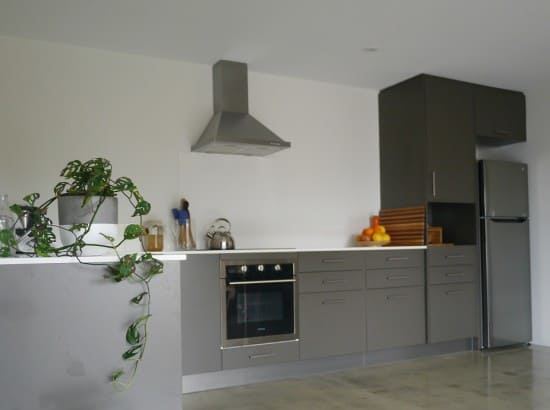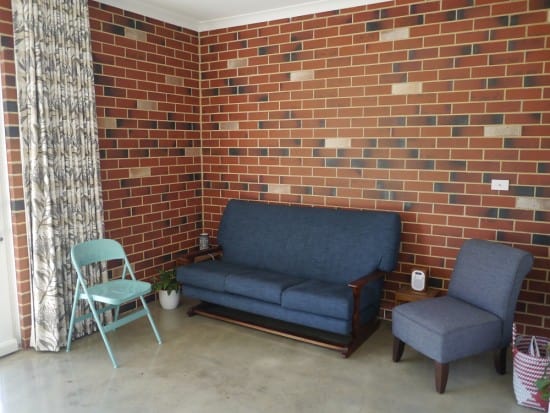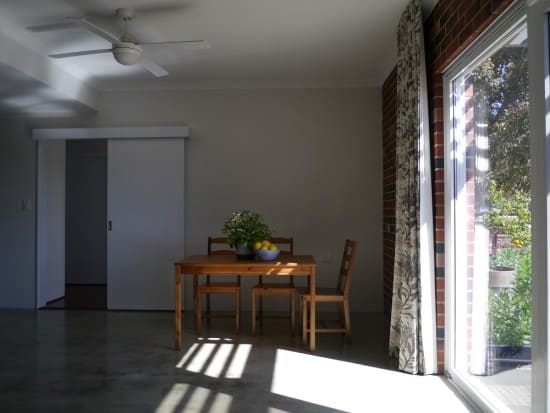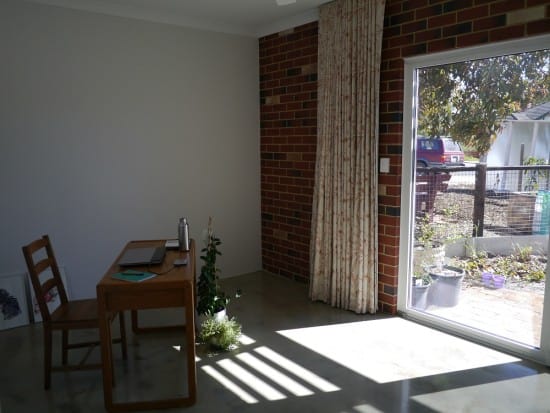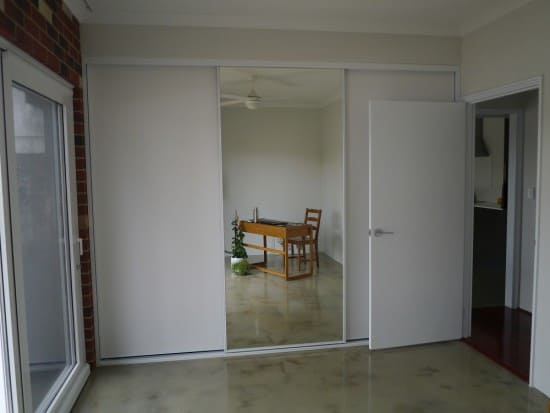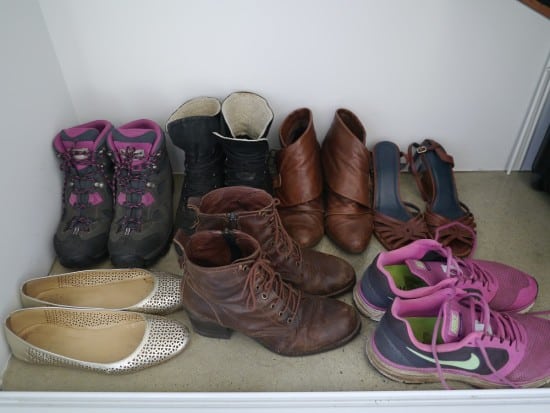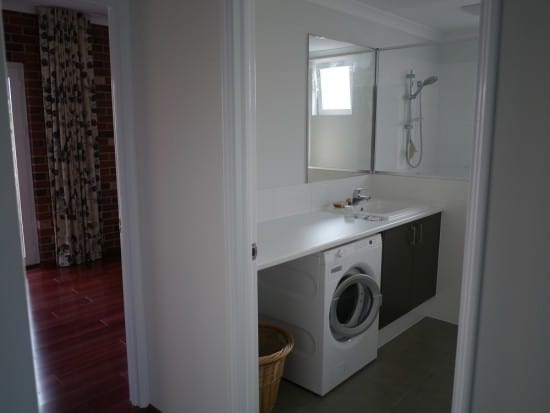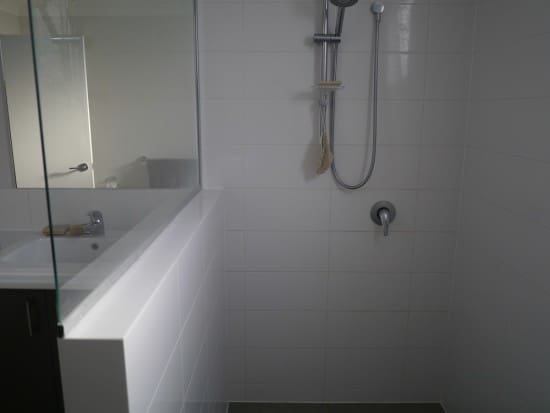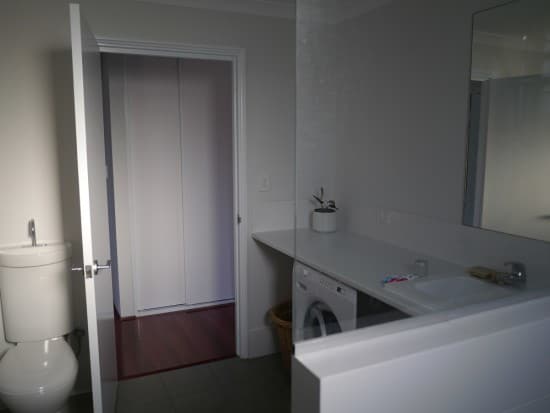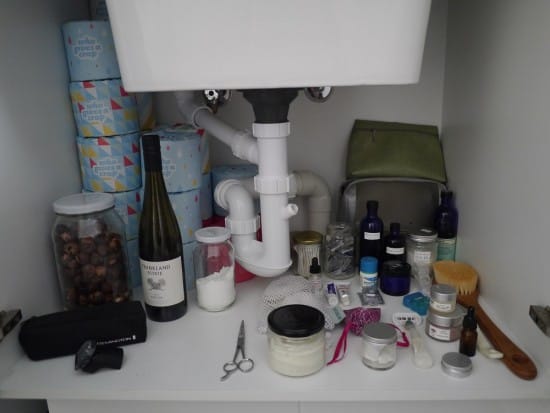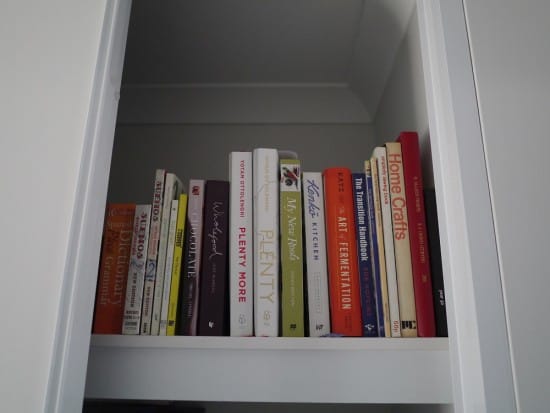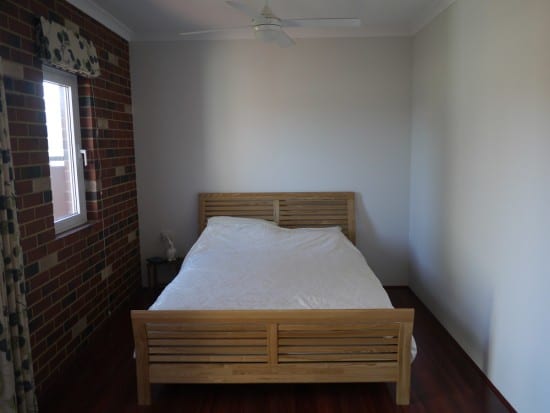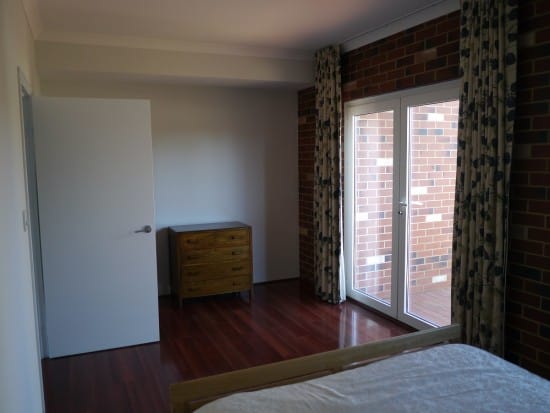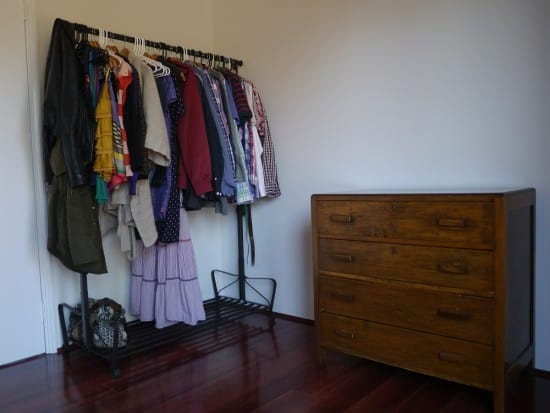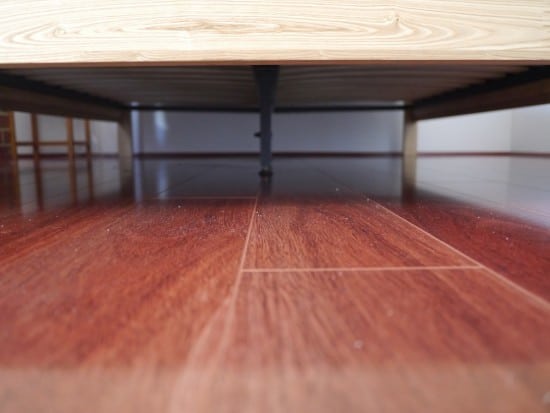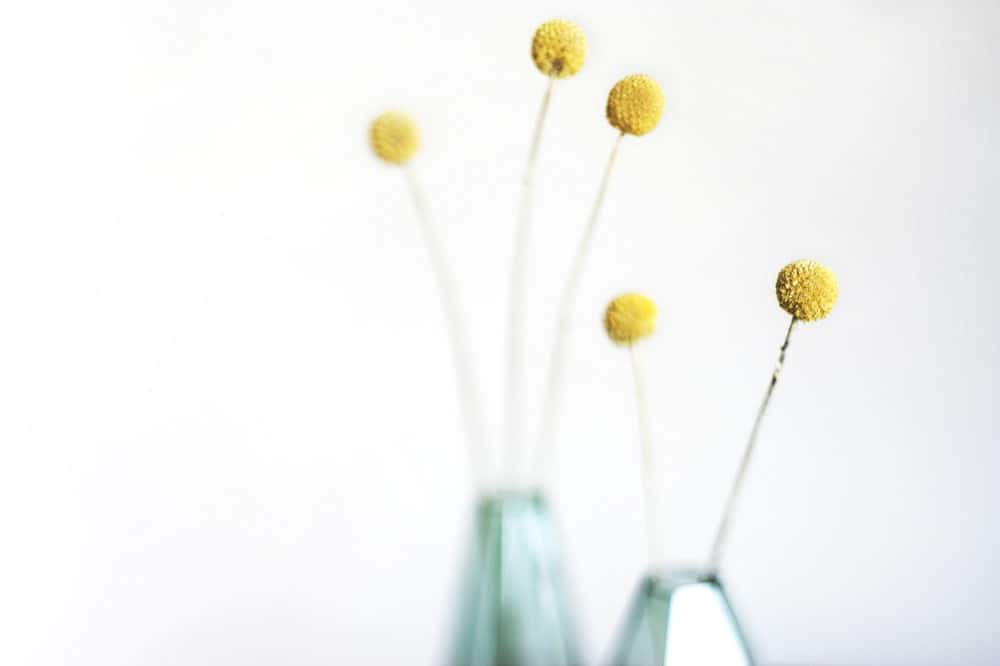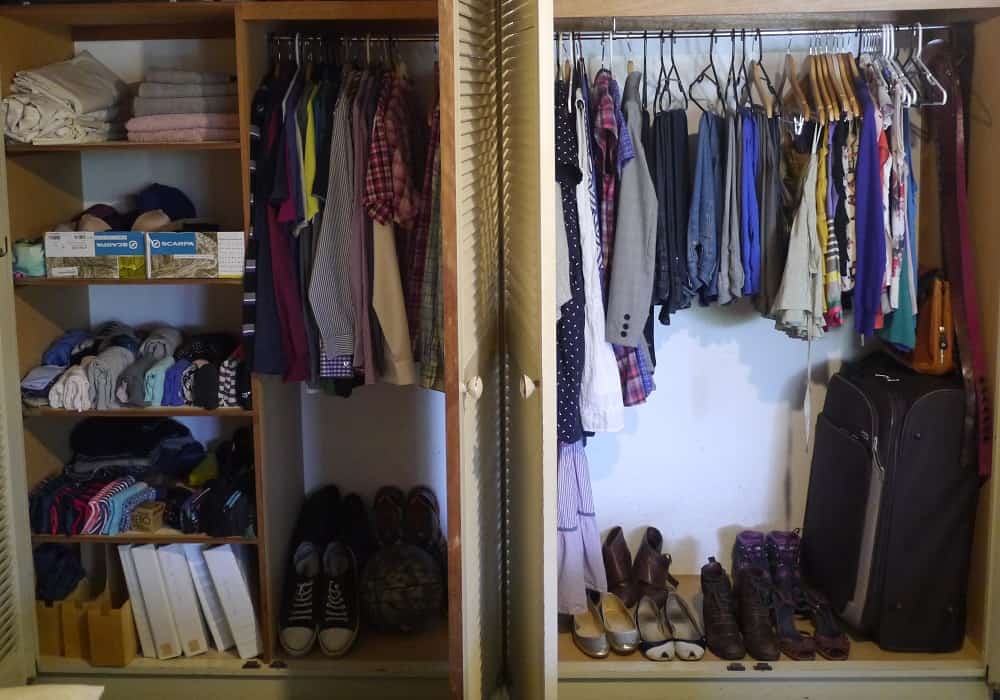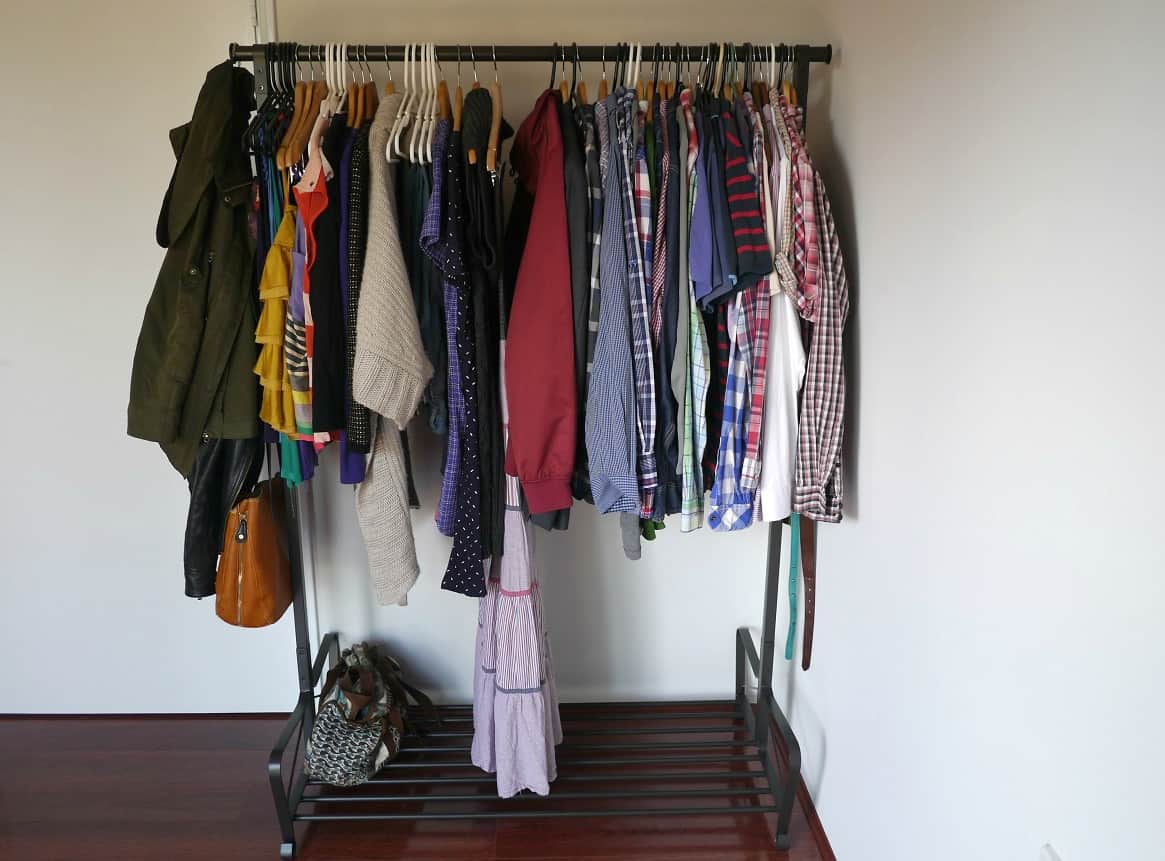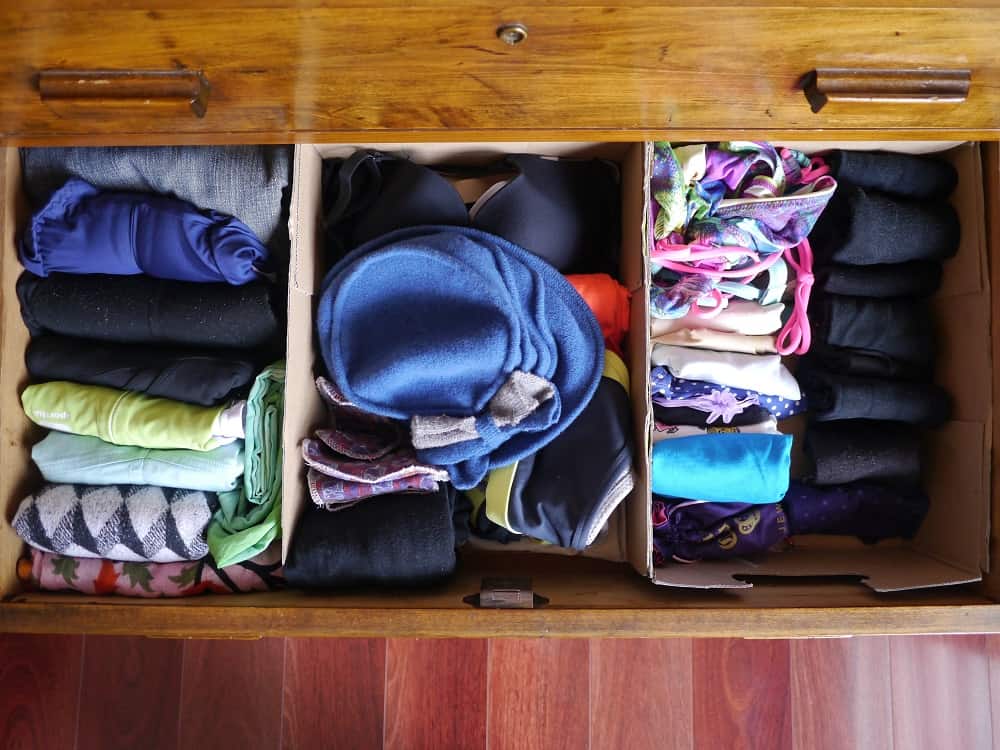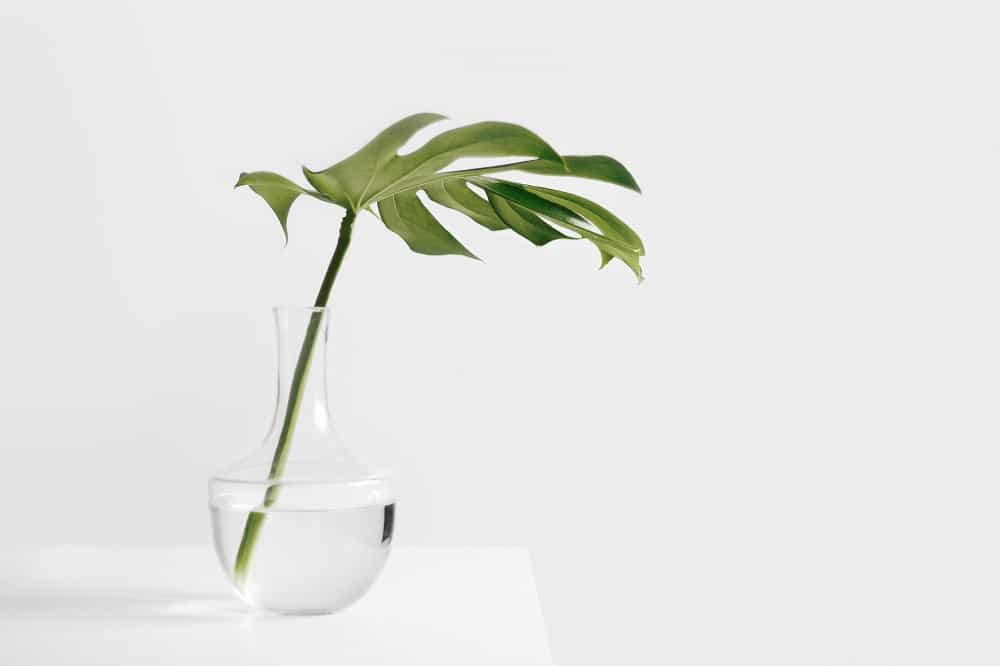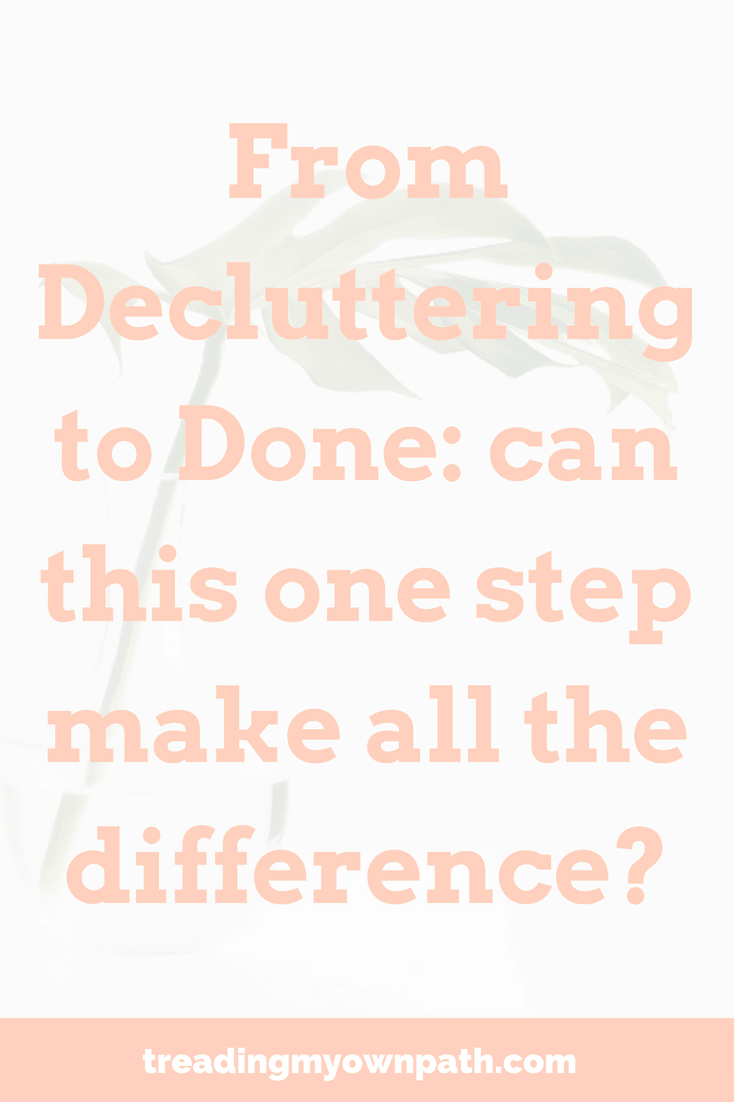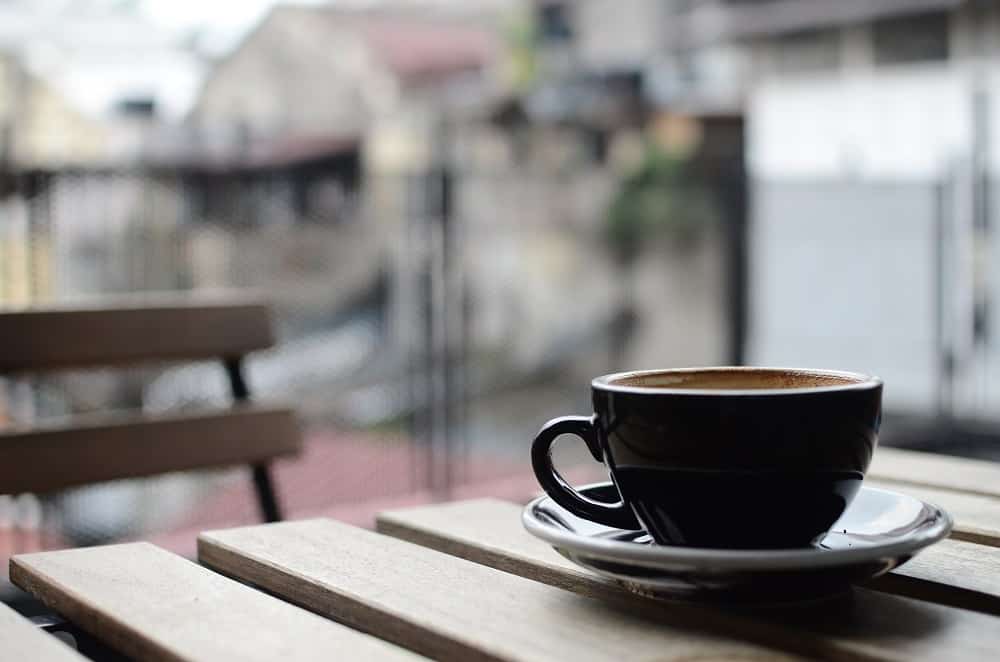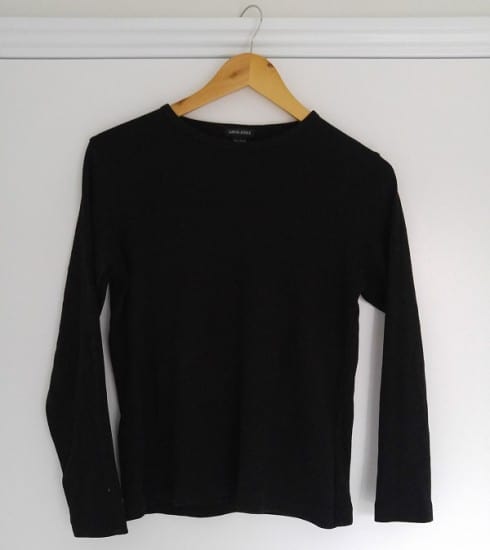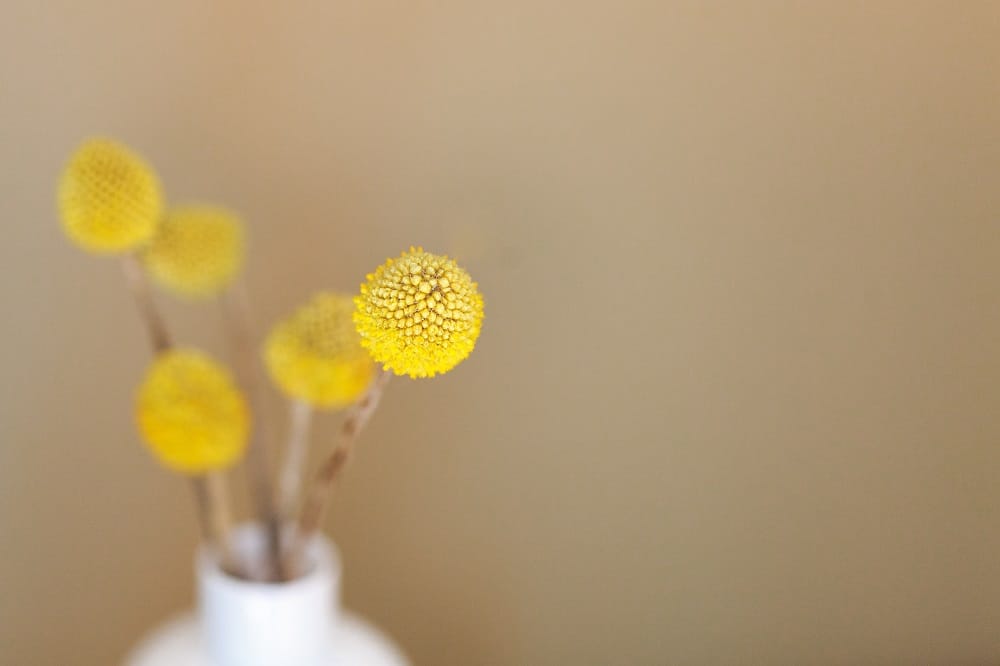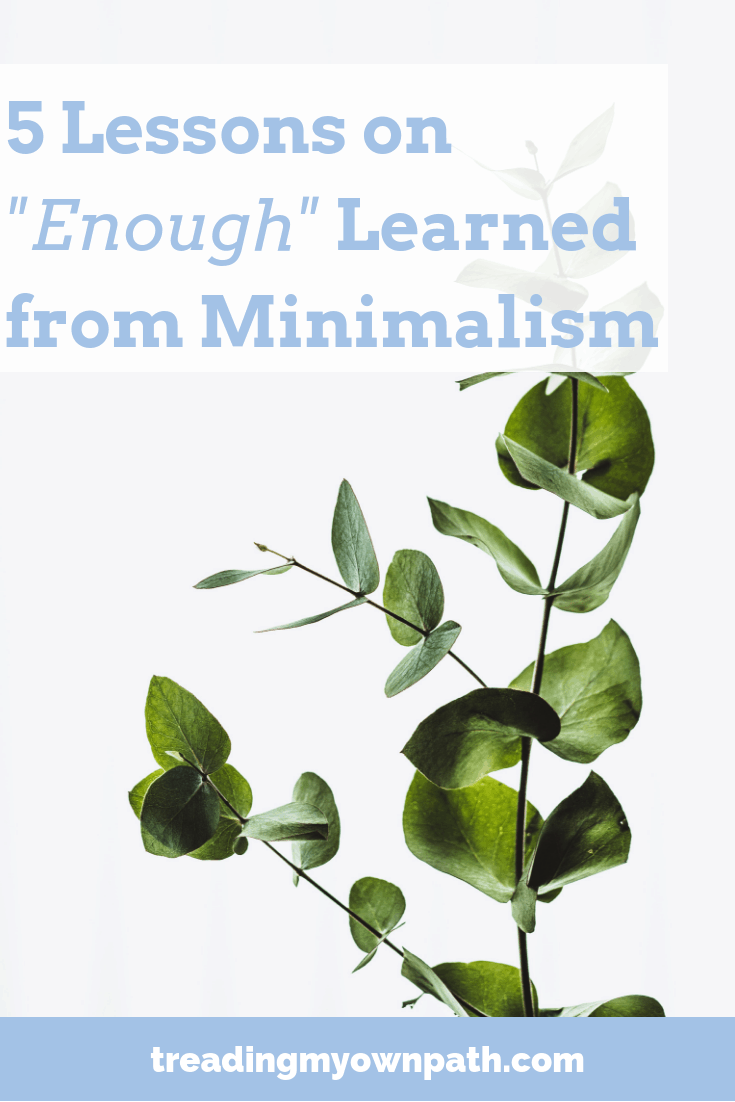Essentials for a Zero Waste Kitchen
When it comes to the kitchen, I would not call myself a minimalist. At least, not by “minimalist” standards (whatever they are anyway). That said, I do not consider anything I own to be unnecessary – I do not own special Christmas crockery, or fancy obscure gadgets (cherry stoner, avocado slicer, chocolate fountain), for example.
I own a lot of kitchen things because I like to cook, and I especially like to eat. Whilst I think it’s possible to live zero waste without needing to cook everything from scratch, I personally enjoy making food from scratch. Cooking is my creative outlet.
Making food from scratch requires a bit more stuff.
What is more important to me than minimalism is zero waste, and my kitchen has found a balance that I am happy with. We rarely buy anything new. Our last purchase (in February) was when we moved into our new home. We had to buy a frying pan as our old one didn’t work on the induction hotplate. Borrowing the neighbours’ pan several times a week didn’t really work out for us! (Or them!)
I thought I’d show you round our kitchen, and talk about our zero waste kitchen essentials. Essentials, of course, are a personal thing, depending on what you like to eat, living arrangements, how you cook and where you live.
I don’t think everyone living a zero waste lifestyle would need to own everything that I do. This isn’t an instruction manual, it’s a snapshot of the choices that we’ve made in living zero waste (with a hint of minimalism thrown in).
A Tour of our Zero Waste Kitchen
When I shared this photo on a previous tour of my house, someone asked me if I’d tidied up. OF COURSE I TIDIED UP! My house is not ever as tidy as this unless I make a concerted effort. For example, the draining board is almost always full of drying dishes (one of the downsides of zero waste living is the extra washing up). And there’s often ferments, or sourdough, or harvested veggies sitting on the side.
Yes, I tidied up for you guys ;)
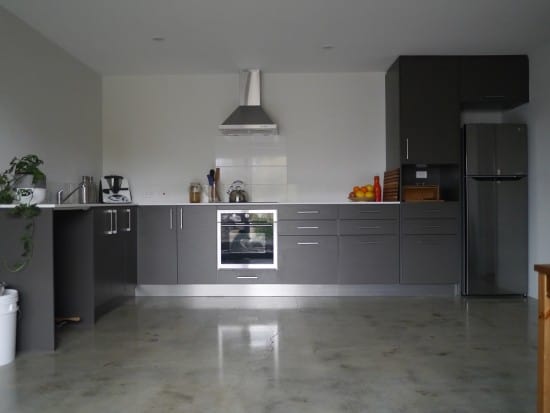
My zero waste, minimalist (ish) kitchen.
Let me introduce the kitchen. It’s an L-shape with an impractical amount of cutlery drawers (there are 7!) and very little cupboard space. I am determined not to add cupboards to the wall, as I like the white space. I’d rather put up pictures!
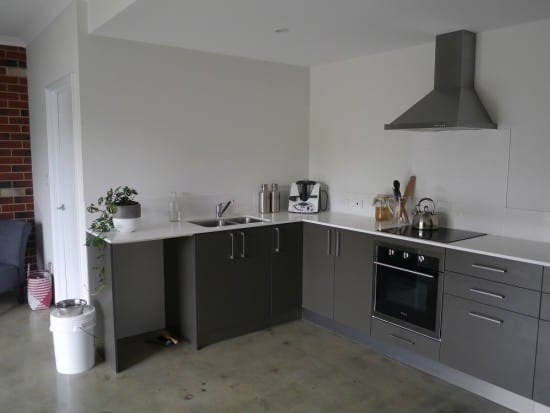
Kitchen Counters: On our kitchen counters we have 2 large Klean Kanteen growlers. When we run the hot water, it actually takes 7 litres of water to run hot, and we can’t just throw this down the drain. I used to use old wine bottles but we’d end up with 11 or so on the counter, and I couldn’t bear the clutter! These growlers can be used for beer, and we can take them camping.
The white machine in the corner is our food processor (it’s called a Thermomix). It’s got a stainless steel bowl, and also has the function to heat. I use it every day – to blend, chop and mix, mostly. Before this, I had a Magimix, but the bowl was plastic.
Next to the hotplate is a glass jug that doubles as a utensil holder. We have 3 silicon spatulas, a couple of wooden spoons (one for sweet things and one for savoury) and a rolling pin.
The kettle is a stovetop one that we bought second-hand. I like that it lives on the hotplate, rather than cluttering up the counters.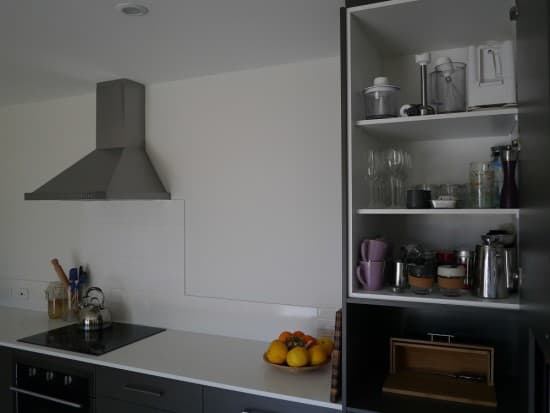
Tall Cupboard: The cupboard on the right was intended to be a pantry, but unless you’re 6 ft tall it’s not very practical and there would be a huge amount of wasted space.
Top shelf: we have a stick blender with various attachments (I sold the ones I didn’t need on eBay!) and a spiraliser. Possibly the only gadget I have that’s a bit gimmicky, but we use it a lot in summer. In fact, my husbands uses it, so it’s staying!
Middle Shelf: we have wine and champagne glasses (currently 5 wine and 2 champagne), water glasses (5 assorted), two short coffee cups (that were originally yoghurt pots), salt and pepper grinders and my onyx ice cube tray. At the back are some glass jars I was storing for a workshop, and my husband’s cycling water bottle.
Bottom shelf: this is the coffee/tea shelf – you just can’t be minimal about that! We own 8 mugs (which seems excessive but my husband originally had 16!), our coffee press, two KeepCups, bits and pieces for the coffee machine (handle thingy, jug, funnel) and of course, tea and coffee.
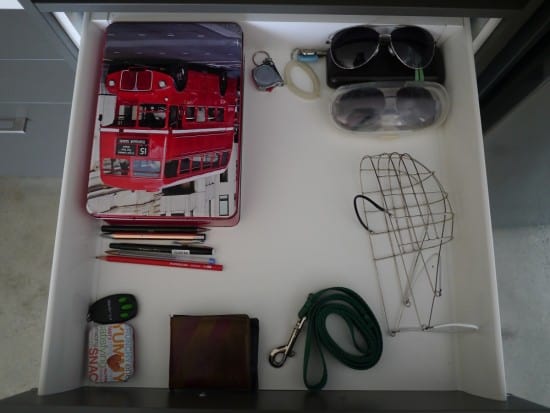 Drawer 1: I guess the top drawer in our kitchen would be classed as our junk drawer. We keep Hans’ (our adopted greyhound) lead and muzzle in here, sunglasses, garage clicker, pens and seeds. As we had so many drawers that weren’t that useful for much else it made sense to keep this stuff here.
Drawer 1: I guess the top drawer in our kitchen would be classed as our junk drawer. We keep Hans’ (our adopted greyhound) lead and muzzle in here, sunglasses, garage clicker, pens and seeds. As we had so many drawers that weren’t that useful for much else it made sense to keep this stuff here.
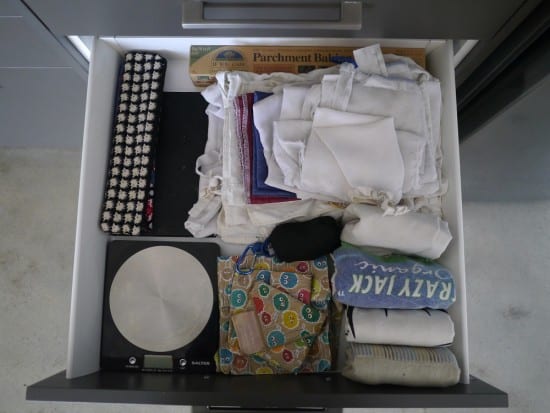
Drawer 2: The second drawer down contains our kitchen scales (so necessary!), our reusable shopping bags, produce bags and reusable wraps. There’s also a black book where I keep my most-used recipes. And yes, I use baking paper (which I reuse, and then compost). You can read why here. 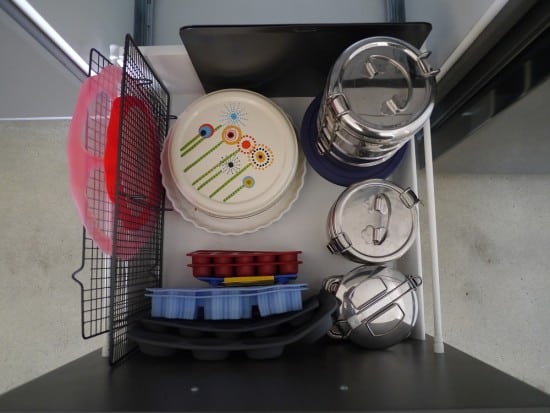
Drawer 3: The third drawer contains most of my reusables. I have 3 baking sheets (one is in the fridge) and 2 cooling racks. I find it useful to have 3 trays when I’m baking as otherwise it takes twice as long and uses more electricity.
The pink and red circles are silicone bowl covers (there’s a white one too that might have been in the fridge).
Then there’s the rest of my silicone bakeware, stainless steel food storage containers and glass Pyrex. I own a lot more Pyrex but it’s often in the fridge or freezer holding leftovers.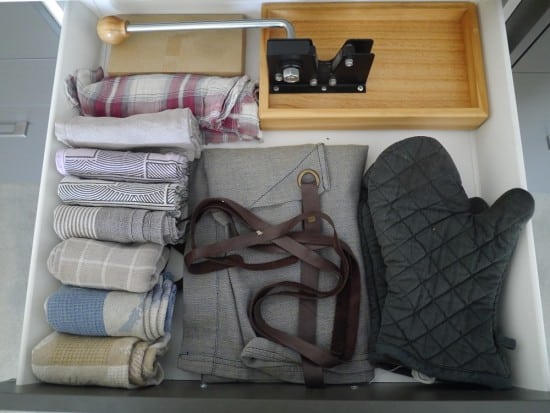
Drawer 4: This drawer contains our oven gloves, an apron (I am a messy cook!) and far too many tea towels. I think three is enough, but we will use these out and not replace them. The contraption at the back is a macadamia nut cracker. Those things are tough! (We often buy 5 kg sacks of the nuts, and shell by hand.)
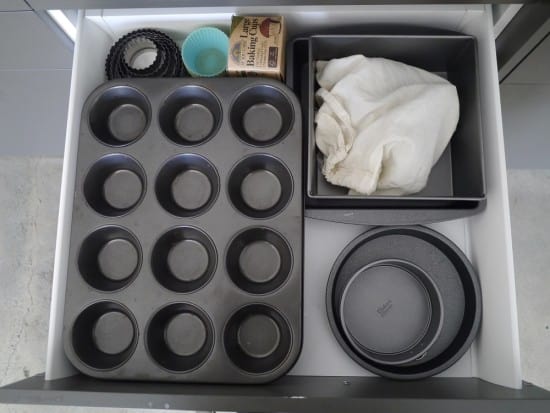
Drawer 5: The rest of my bakeware. Yes, it is necessary to have all of these different sizes! I have 2 square tins, a muffin tin, individual silicone cupcake cases, two sandwich tins and a tiny cake tin for experiments!
I tried to choose something to get rid of when we moved, and I just couldn’t. You know what? I’ve used every single thing since we moved. I guess they are just all essentials!
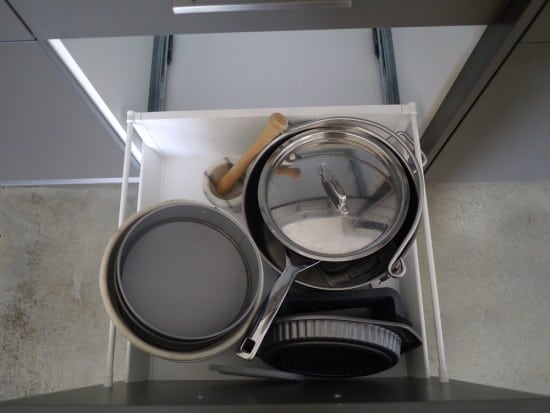
Drawer 6: Okay, so maybe there’s slightly MORE bakeware in here. And I haven’t used that flan tin in the last 6 months, Still useful, I say!
You’ll notice that despite the front of the drawers being enormous, the sides and back are the same depth as a regular drawer, making them very hard to fill. Hence why the bakeware is spread across three drawers – it is in no way because I have too much!
I have a big maslin pan which I use for preserving and also for cooking up big batches of chickpeas. My frying pan sits on top, and in between is my glass loaf tin – sourdough rusts the metal ones.
Underneath the round cake tin is a banneton basket (for proving sourdough) and three large bowls (one ceramic, two glass).
The pestle and mortar is a charity shop find.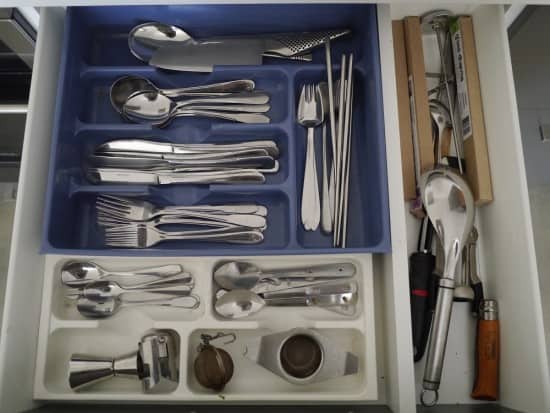 Drawer 7: Much as I hate plastic, I dislike a jumbled cutlery drawer more. And there seemed no point discarding what we already had to buy something new and plastic-free.
Drawer 7: Much as I hate plastic, I dislike a jumbled cutlery drawer more. And there seemed no point discarding what we already had to buy something new and plastic-free.
We have two sharp knifes, and a cutlery set for four (it was originally for 8 but we decluttered the other half). There’s two sets of camping cutlery also. We also have a set of salad servers and a big serving spoon, two tea strainers, a spirit measure, champagne stopper, metal chopsticks, a vegetable peeler, thermometer and corkscrew. Plus there’s some reusable straws (in the boxes).
Of everything, a good sharp knife (ours is the Global brand) is definitely an essential. We also have a set of measuring spoons (not pictured).
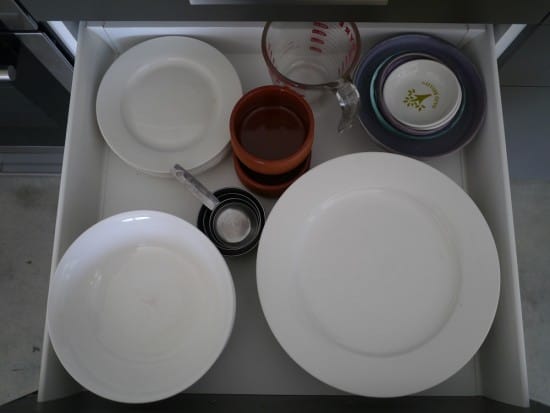 Drawer 8: our crockery. We have 6 dinner and side plates, and 5 bowls as one broke (which is fortunate as the drawers are too shallow to hold six bowls). There’s my set of measuring cups, a Pyrex measuring jug and assorted bowls and dishes that get used for various things. The two brown ones were the containers for some fancy dips purchased at the supermarket!
Drawer 8: our crockery. We have 6 dinner and side plates, and 5 bowls as one broke (which is fortunate as the drawers are too shallow to hold six bowls). There’s my set of measuring cups, a Pyrex measuring jug and assorted bowls and dishes that get used for various things. The two brown ones were the containers for some fancy dips purchased at the supermarket!
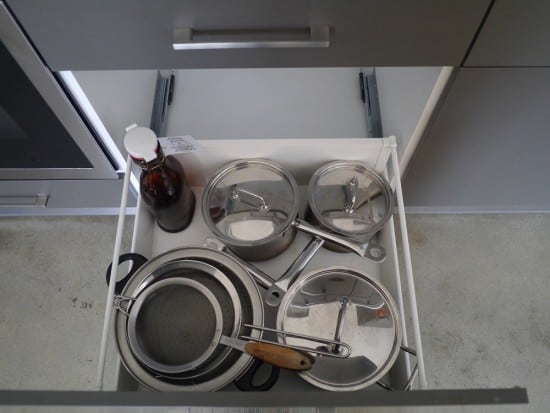
Drawer 9: We have 3 saucepans, and I wouldn’t like any less. I tend to use them for storing leftovers in the fridge also. I have two sieves and two colanders. I use them all, but I am sure once they break I will manage with less.
The glass bottle is a beer growler for our local zero waste beer store.
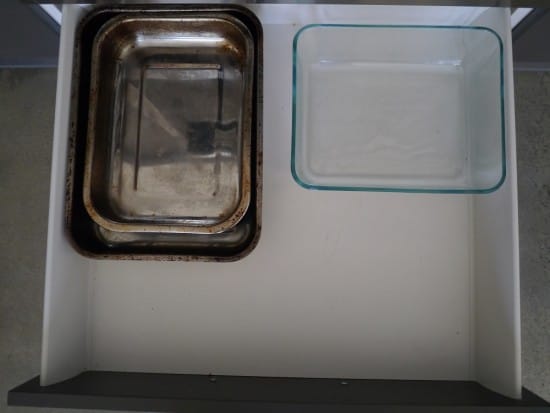
Drawer 10: The drawer under the oven is even shallower than the other 6, and barely anything fits. We keep our two stainless steel roasting dishes in here and our rectangular Pyrex containers (we have 2, but one is currently in the freezer).
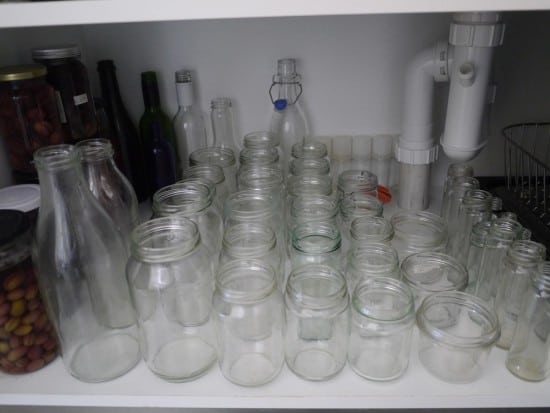
Cupboard under the sink: We keep our extensive jar collection here. Glass jars are useful for everything, and are definitely a zero waste essential!
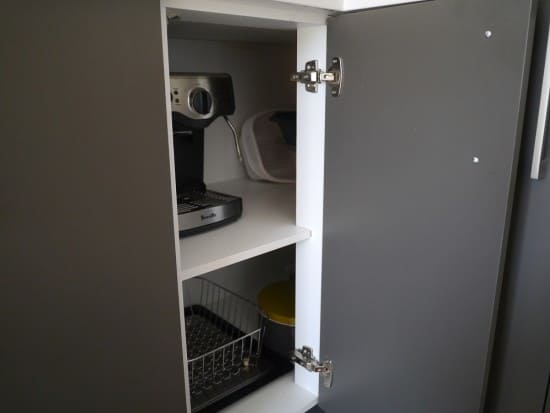
Corner Cupboard: We keep our coffee machine here, and the dish drying rack. There is also a plastic colander that came with the house (randomly) and more storage tins.
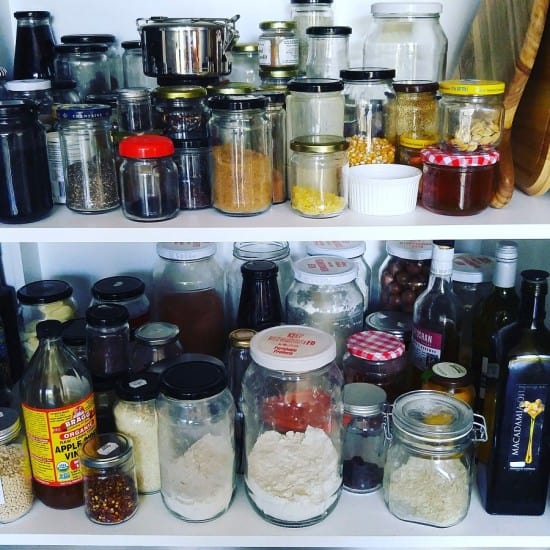
Other cupboard: As well as storing our food, we keep our chopping boards here.
That’s the tour!
Now I’d love to hear from you! Tell me, what are your zero waste kitchen essentials? Do you love cooking, or hate it? How does your kitchen compare with mine? What could you not do without? What can you do perfectly well without? Have you ever thought you’d not be able to manage without something, only to find that you could? Is there anything that I have that jumps out at you as surprising? Are you a gadget fan, and if so, what are your favourite gadgets? Are you much more minimalist than this? Anything else you’d like to add? Please tell me your thoughts in the comments below!
[leadpages_leadbox leadbox_id=1429a0746639c5] [/leadpages_leadbox]


